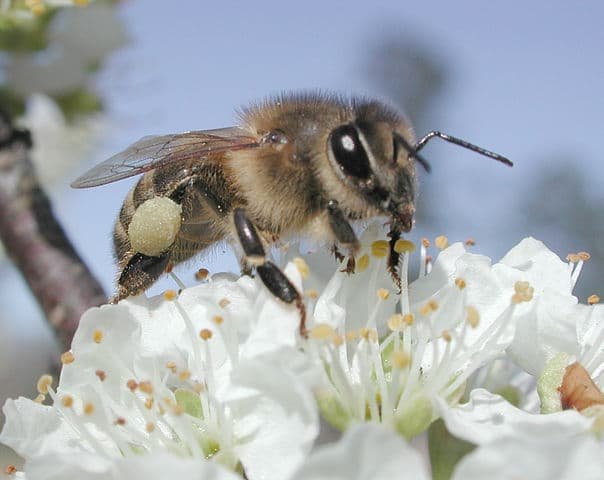Both allogamy and xenogamy are terms used in biology to describe two types of sexual reproduction that differ in the origin of the male and female gametes involved in fertilization.
If the gametes come from the same individual, they talk about autogamy . If the gametes come from different individuals, we talk about allogamy .
When talking about plants, alogamy is synonymous with cross-pollination , but cross-pollination in plants also occurs between different flowers of the same individual. And also between flowers of different individuals but which are genetic clones.
Thus, in plants there are two types of allogamy or cross-pollination: xenogamy and geitonogamy . In xenogamy, flowers of genetically distinct individuals intervene, while in genetically speaking genetically equal individuals or, what at the genetic level gives the same result, different flowers of the same individual.
Table of Contents
Alogamia, xenogamy and cross-pollination
In allogamy , syngamy ( fertilization or fertilization) occurs between gametes of different individuals . In other words, alogamy is a type of syngamy that occurs between a sperm and an egg of different individuals.
The reproduction in the human being would be a form of alogamia.
On the contrary, autogamy is a process of self-fertilization, it is a type of syngamy that is produced with sperm and ovules that come from the same individual . Autogamy is very common in plants and certain types of protozoa.
In the specific case of plants, fertilization or syngamy is usually called pollination . The alogamia would be what is called cross pollination or indirect pollination , and includes not only pollination between different individuals, but also pollination between different flowers of the same individual.
The autogamy would be called self-pollination or direct pollination , and would self-fertilize in hermaphrodite flowers ( stamens and pistils in the same flower ).
In cross-pollination, since plants can reproduce asexually and give rise to genetically cloned individuals (strains), two types of allogamy are differentiated :
- Xenogamy : is cross-pollination between genetically distinct plants or individuals.
- Geitonogamia : is the alogamia or pollination that occurs between different flowers but from the same individual or between flowers of different but genetically equal individuals (between clones or strains).
Therefore, the alogamia is the singamia (union of gametes) that occurs between different individuals . When intervening gametes, the alogamia is a sexual reproduction process . Autogamy is another process of sexual reproduction in which the gametes come from the same individual.
In plants, cross-pollination would be a form of allogamy, but the term allogamy is also used to refer to the pollination between different flowers of the same individual .
Many plants have unisexual flowers of different sex in the same plant ; the pollen of a male flower can fertilize a female flower of the same plant, and this would also be a form of alogamia , specifically a type of alogamia called geitonogamy.
Cross-pollination between flowers of the same individual has the same result at the genetic level as pollination between different genetically equal individuals or clones. These clones are formed by some of the various methods of asexual reproduction that plants follow, and pollination between them is also considered geitonogamy.
The xenogamy be other alogamia that occurs in plants when pollen comes from flowers of another genetically different individual, never the same individual or between clones or between the same strain
Since xenogamy occurs between genetically different individuals, it can even occur between plants of different species in some cases, the term cross-hybridization is also used to differentiate it from simple cross-pollination.
Key differences between allogamy and xenogamy
- The outcrossing is syngamy or fertilization between sperm and egg of different individuals of the same species.
- The xenogamy relates to fertilization between genetically different individuals , so it is a type of outcrossing.
- Alogamia includes two types: xenogamy (between genetically different individuals) and geitonogamy (between genetically equal individuals, in plants it includes pollination between different flowers but from the same individual).
- Xenogamy is important from the evolutionary point of view , since it increases the genetic variability and the introduction of new alleles in the population. It also reduces the possibility of homozygosis and increases heterozygosity .
- Geitonogamia produces genetically equal descendants.
- Xenogamy produces genetically variable descendants.
References
- Xenogamy . Species, Genetic, Alleles, and Homozygous. JRank Articles.
- Allogamy – an Overview . ScienceDirect Topics.



